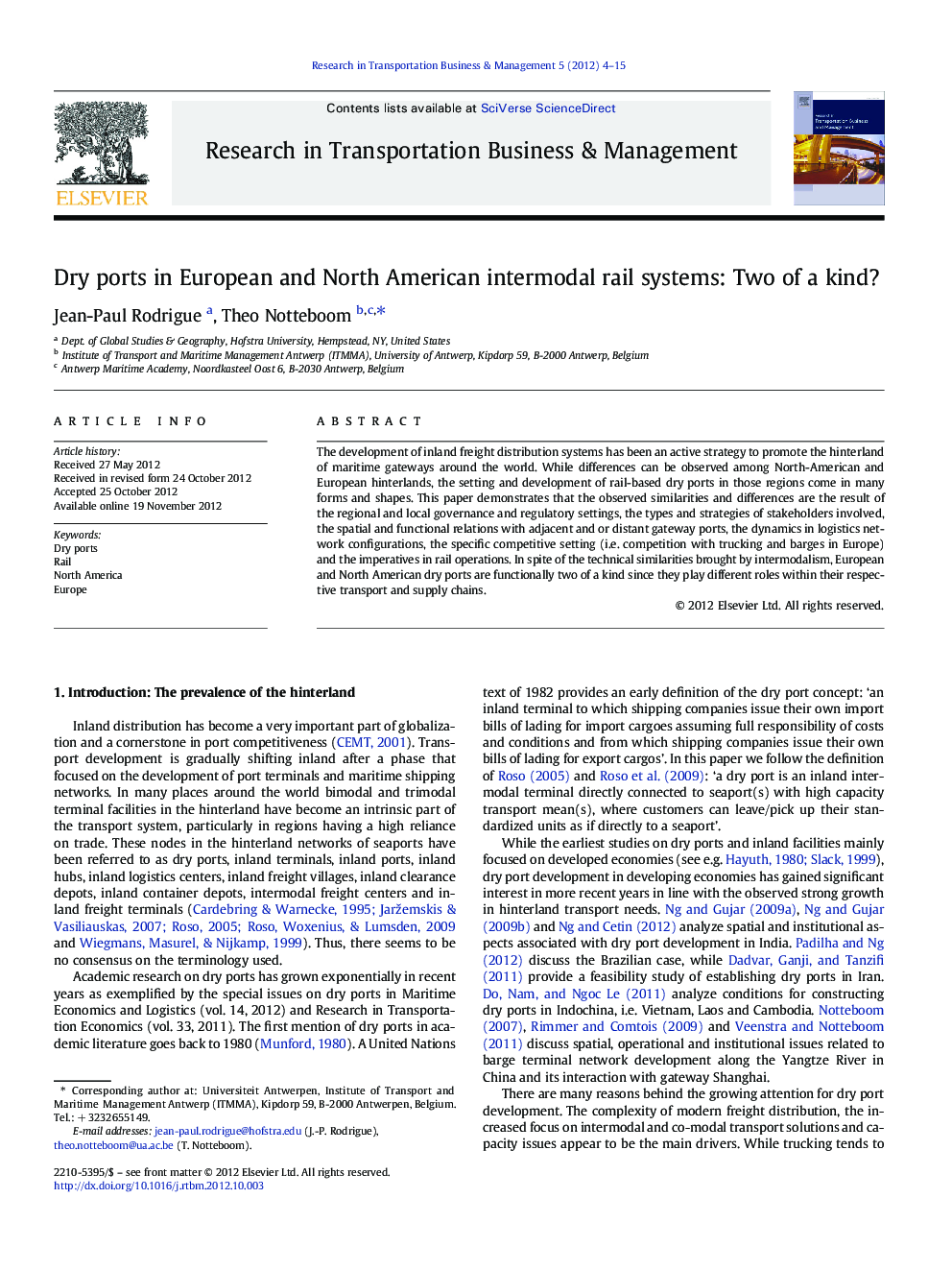| Article ID | Journal | Published Year | Pages | File Type |
|---|---|---|---|---|
| 999821 | Research in Transportation Business & Management | 2012 | 12 Pages |
The development of inland freight distribution systems has been an active strategy to promote the hinterland of maritime gateways around the world. While differences can be observed among North-American and European hinterlands, the setting and development of rail-based dry ports in those regions come in many forms and shapes. This paper demonstrates that the observed similarities and differences are the result of the regional and local governance and regulatory settings, the types and strategies of stakeholders involved, the spatial and functional relations with adjacent and or distant gateway ports, the dynamics in logistics network configurations, the specific competitive setting (i.e. competition with trucking and barges in Europe) and the imperatives in rail operations. In spite of the technical similarities brought by intermodalism, European and North American dry ports are functionally two of a kind since they play different roles within their respective transport and supply chains.
